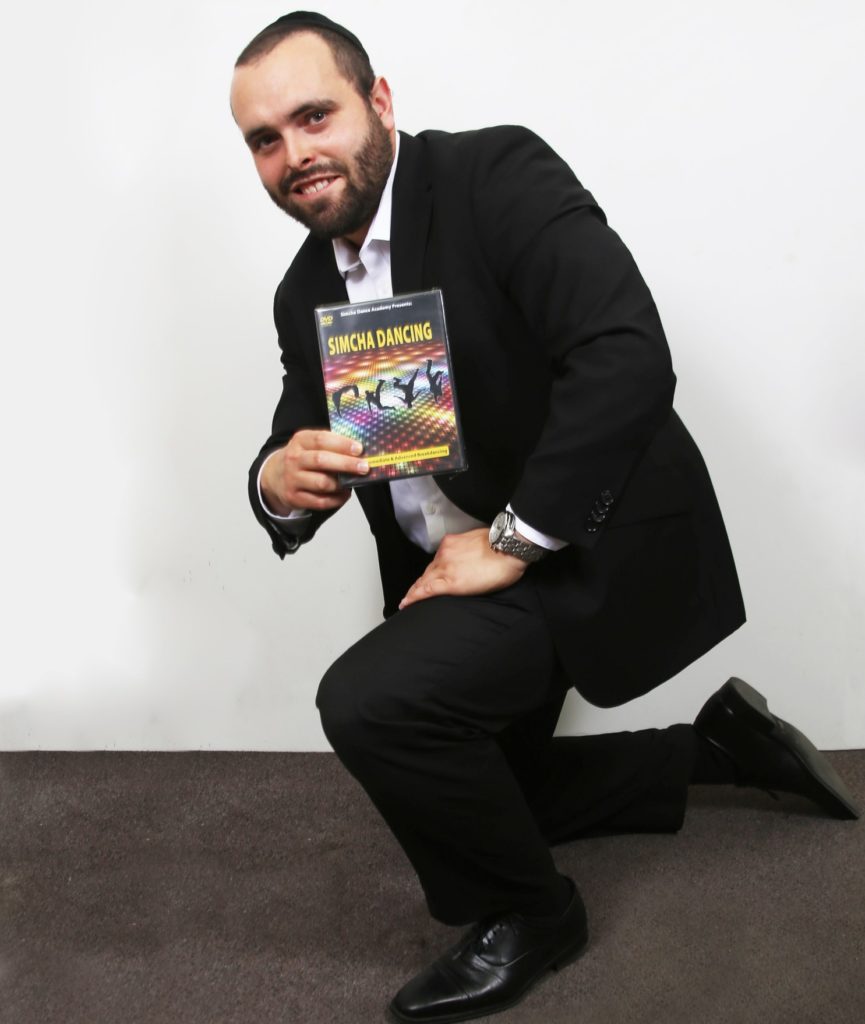
For the last 14 years, Chaim Lubimzev has been teaching a family friendly and kosher breakdancing school for the religious world. He is the owner of Simcha Dance Academy in Toronto, Canada. Chaim is 35 years old and lives with his wife and five children in Toronto, Canada.
Q: How did you take the “street” out of breakdancing and make it “kosher” dancing?
Breakdancing is really an acrobatic style of dancing. It is dancing and there is no street element to it at all. To make breakdancing kosher and family friendly, I use Jewish music like Yaakov Shwekey which provides a great beat for dancing. Also, breakdancing has become a competitive market. In fact, breakdancing will be in the Olympics in 2024.

Q: How is Simcha Dance Academy different from other dance schools?
My classes were never about just teaching dance. It was either to help the kids become good at something or to build their self esteem and to have a big brother figure. It was never intended for the students to become professional breakdancers. It was to build them up. I found that breakdancing allows the yeshiva boys to use their talents in a way to inspire others and create a positive change in the frum community.
My philosophy is to show that a person can use their talents for a greater good. That is worth more to me than earning a medal. The biggest trophy I could receive is seeing the kids look happy and self confident. For example, one student I had taught breakdancing to had a learning disability. When I first met him he asked me, “Do you know what school I go to?” It was as if he was saying, “How do you expect me to learn how to do breakdancing?” He didn’t believe in himself any more. By going to a special needs school he felt as though that he was being labeled. “I have been put into a box where the expectation is that I can’t do much and I certainly will not be able to learn how to breakdance.”
I began teaching him a certain move in breakdancing. He learned it right away and said, “Yes!” He gave me the biggest high five. I could see him beaming with pride. This was one of the nicest accomplishments for him. The fact that he learned to breakdance and all the positive feedback he received from it, broke his mold of thinking negatively about himself.
Q: How did you decide on the name of the school?
Simcha in Hebrew means joy or happiness. This feeling is essentially what I would like our students to experience, whether it be through mastering the moves or being affiliated with the dance school.

Q: What is the most popular age you teach?
Boys 7-14 years old.
Q: What feedback have you received as a result of your classes?
I have only heard good things. Many kids have benefited from it.
One interesting reaction happened at a friend’s wedding. Here I was a newly observant Jew dressed in a black suit and a white shirt performing breakdancing at the wedding. I could hear some of the kids say, “How cool.” I had just started to keep Shabbos and I had even turned down participating in a breakdancing championship because it was to be held on Shabbos.
At that time it was an uncommon sight in the religious world to see breakdancing performed at a wedding. So while I was dancing, one of the guests at the wedding came up to me and said, “I was watching you dance and I wanted to tell you that this is a kiddush Hashem.”
Q: What inspires you to keep breakdancing?
For me breakdancing is an art form, and in art, there’s no limit to creativity. I always tell my students to feel free to experiment with different ways of performing moves and different combinations of moves.
Also, Rav Yaakov Asher Sinclair from Ohr Somayach in Yerushalayim told me that people with an artistic bent shouldn’t suppress those feelings. Art is an expression of the neshamah, the soul and suppressing it will lead to negative consequences. The Rav said the best way to do it is to find a kosher way of using that talent or art form. Thanks to his advice, I kept dancing! You can check out the latest instruction videos on my website.
